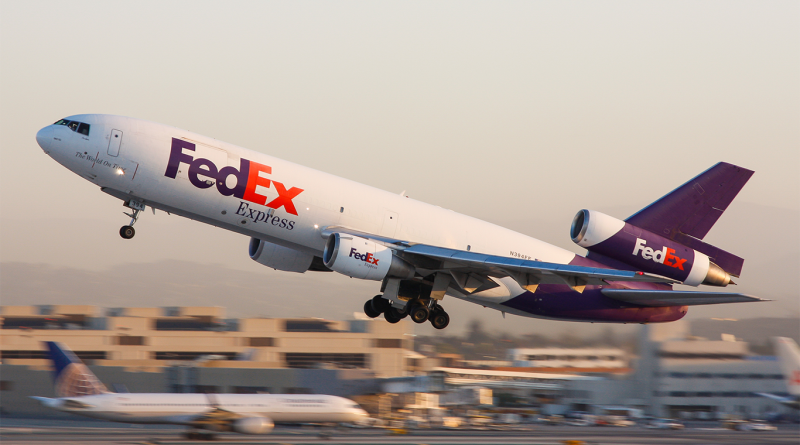FedEx’s Bold Strategy and Investments to Lead in Global Markets
FedEx is strategically prioritizing healthcare and automotive logistics to capitalize on high-value, time-sensitive shipping needs. Healthcare logistics, in particular, represent a profitable niche, where precision and reliability are paramount. FedEx Surround, the company’s real-time shipping visibility platform, plays a critical role in meeting the rigorous demands of this sector by providing live tracking, predictive alerts, and robust reporting capabilities.
The automotive B2B sector is another growth area, offering opportunities to ship heavy, often custom-manufactured parts that require secure and timely transportation. Both sectors align with FedEx’s broader strategy to shift its business mix toward higher-margin shipments. Unlike e-commerce, which often prioritizes cost over speed, healthcare and automotive logistics demand premium services, ensuring higher revenue per package and stronger customer loyalty.
Strengthening US e-commerce capabilities
In the US, e-commerce continues to dominate parcel volume growth, and FedEx is doubling down on this opportunity. To set itself apart in a crowded market, the company is emphasizing speed, coverage, and innovative services like picture proof of delivery.
FedEx’s Network 2.0 initiative is another critical component of its e-commerce strategy. By streamlining pickup and delivery routes and consolidating operations, the program aims to reduce costs while increasing capacity and reliability.
Anticipating further growth in US parcel volumes, FedEx is leveraging its extensive logistics network and technology-driven innovations to remain a leader in the e-commerce sector. The company’s commitment to operational excellence positions it to capitalize on one of the fastest-growing segments of the logistics industry.
Global air freight as a growth engine
FedEx is making significant strides in global air freight, leveraging its vast network and innovative programs to capture new opportunities in this high-margin sector. The company’s Tricolor air freight initiative plays a pivotal role in this strategy by dividing its air network into three distinct categories—Purple, Orange, and White. This segmentation optimizes asset utilization, enabling FedEx to better address the diverse needs of expedited shipments, e-commerce, and deferred freight.
To further strengthen its position, FedEx has created a dedicated global air freight sales organization. This specialized team focuses on capturing a larger share of the international market, particularly in regions with growing demand for high-speed, high-value shipments.
Despite challenges such as fluctuating fuel prices and evolving trade regulations, FedEx’s investments in air freight capabilities demonstrate a commitment to maintaining its competitive edge.
Expanding in the European parcel market
Europe represents a lucrative opportunity for FedEx, with its parcel market valued at approximately $130 billion. FedEx aims to significantly increase its market share on the continent by leveraging its extensive network and operational expertise. The company’s Network 2.0 initiative, which streamlines operations and reduces costs, is being implemented in Europe to enhance efficiency and service quality.
FedEx is also focused on tailoring its offerings to meet the unique needs of European customers. With a mix of dense urban areas and rural regions, Europe requires flexible and scalable logistics solutions. The competitive landscape in Europe includes strong players such as DHL and DPD, but FedEx’s global reach and innovative strategies provide a distinct advantage.
The impact of Network 2.0 and DRIVE programs
FedEx’s long-term growth and efficiency goals are anchored in two transformative initiatives: Network 2.0 and the DRIVE program. Both aim to modernize operations, reduce costs, and position the company for sustained success in a competitive logistics landscape.
Network 2.0 focuses on creating a more cohesive and efficient logistics network. By consolidating sortation facilities, streamlining pickup and delivery routes, and optimizing the enterprise linehaul system, FedEx is building a fully integrated end-to-end network. This overhaul is projected to add $2 billion in annualized operating income by 2027 while enhancing service reliability across the company’s global footprint.
The DRIVE program complements this by targeting structural cost reductions. Through measures such as consolidating operations, reducing redundant routes, and increasing collaboration between its operating units, FedEx expects to save $4 billion by fiscal 2025. These savings not only bolster profitability but also provide resources for reinvestment into key growth segments like healthcare, e-commerce, and international air freight.
Together, these initiatives embody FedEx’s commitment to innovation and operational excellence. Initiatives such as Network 2.0 and DRIVE are not just cost-cutting measures—they represent a reimagining of how FedEx operates, emphasizing efficiency, innovation, and adaptability to lead the global market.
Sources:
To keep up-to-date with our latest supply chain news, subscribe to our newsletter today.
